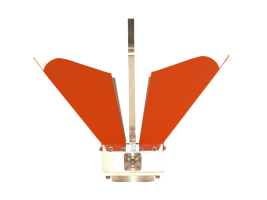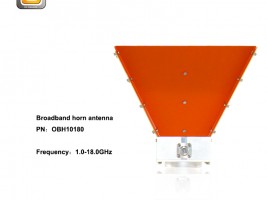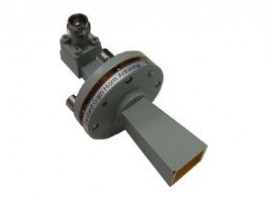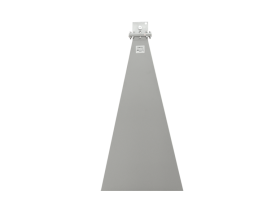4.90-7.05GHz Standard Gain Horn Antenna OLB-159-10
Standard gain horn antenna OLB-159-10 WR-159 is also known as a waveguide horn.
This WR-159 standard gain horn antenna has a 10 dB nominal gain and a square cover flange. Our 15 dB WR-159 horn antenna has a minimum frequency of 4.9 GHz and a maximum frequency of 7.05 GHz.
Standard gain horn waveguide antenna OLB-159-10 has a vertical beam width of 31.3 and horizontal of 32.1degrees at 3 dB.
The C-band is a designation by the Institute of Electrical and Electronics Engineers (IEEE) for a portion of the electromagnetic spectrum in the microwave range of frequencies ranging from 4.0 to 8.0 gigahertz (GHz);however, this definition is the one followed by radar manufacturers and users, not necessarily by microwave radio telecommunications users. The C-band (4 to 8 GHz) is used for many satellite communications transmissions, some Wi-Fi devices, some cordless telephones, and some weather radar systems.
The communications C-band was the first frequency band that was allocated for commercial telecommunications via satellites. The same frequencies were already in use for terrestrial microwave radio relay chains. Nearly all C-band communication satellites use the band of frequencies from 3.7 to 4.2 GHz for their downlinks, and the band of frequencies from 5.925 to 6.425 GHz for their uplinks. Note that by using the band from 3.7 to 4.0 GHz, this C-band overlaps somewhat into the IEEE S-band for radars.
The C-band is primarily used for open satellite communications, whether for full-time satellite television networks or raw satellite feeds, although subscription programming also exists. This use contrasts with direct-broadcast satellite, which is a completely closed system used to deliver subscription programming to small satellite dishes that are connected with proprietary receiving equipment
Features
Precisely Machined and Gold Plated
Low VSWR
Light Weight
Linear Polarization
Low Return Loss
Rectangular Waveguide Interface
Lower sidelobes and symmeterical radiation patterns
Applications
Civil Aviation
Railway
Transportation
Automobile manufacture
Navigation
Experimental Study
Measurement
Safe City Applications
Specifications
|
Frequency Range(GHz) |
4.90-7.05 |
|
Gain(dB) |
10Typ. |
|
3dB Beam Width |
H 55° / V 55° |
|
Waveguide |
WR159 |
|
Material |
AI |
|
Polarization |
Linear |
|
Impedance |
50Ω |


| Frequency Range(GHz) | 4.90-7.05 |
| Gain(dB) | 10Typ. |
| 3dB Beam Width | H 55° / V 55° |
| Waveguide | WR159 |
| Material | AI |
| Polarization | Linear |
| Impedance | 50Ω |



 /attachments/2019/08/15663599267cb6123265a8154c.pdf
/attachments/2019/08/15663599267cb6123265a8154c.pdf


